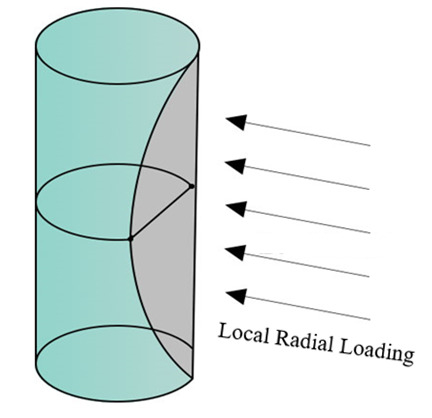An Approach to Calculating Casing Bearing Capacity with Parabolic Deformation Characteristics Under Local Radial Loading
Abstract
:1. Introduction
2. Establishment of the Mechanical Casing Model
3. Calculation of Work and Energy for the Radial Load Deformation
3.1. Conservation of Work and Energy
- (1)
- : Plastic work dissipated by the cylindrical surface of the plastic-deformation zone becoming a curved surface.
- (2)
- : Plastic work dissipated by surface curvature radius change of the plastic-deformation zone.
- (3)
- : Plastic work dissipated by axial stretching in the plastic-deformation zone.
- (4)
- : Plastic work dissipated by rotation of the plastic hinge.
3.2. Work of External Load and Work of Internal Load in Local Radial Load
3.2.1. Work of External Load
3.2.2. Work of Internal Load
4. Example Analysis
5. Conclusions
- (1)
- In the process of oilfield water-flooding development, mudstone creeps to form local radial induced stress acting on the casing, resulting in casing-collapse deformation. Through the measurement of casing deformation in some wells in the Jilin oilfield, it was found that the bottom of the radial deformation is parabolic, and the lateral deformation boundary is symmetric parabolic. In this paper, a calculation method for the local radial load collapse deformation of the casing is presented based on the conservation of work and energy.
- (2)
- The external work of casing deformation caused by a local radial load was transformed into the dissipation energy of casing deformation. According to the conservation of work and energy, the relationship between bearing capacity and casing deformation was established, and four types of casing wells in the study area were selected for calculation and analysis. The results showed that casing bearing capacity under a local radial load was smaller than the standard value designed by the API industry. Compared with the four casing types, the maximum bearing capacity was reduced by 15.07 MPa, and maximum relative reduction was 39.69%.
- (3)
- The results of the four calculation types show that the relationship between casing bearing capacity, wall thickness, and yield stress could be expressed by the linear function of correlation under the local radial load of local sections. Results provide a reference for the selection of other casing types and yield strength of casing wall thickness under this condition.
- (4)
- The research results showed that, under the action of local radial loading, casing selection according to the current API design standard value cannot meet the requirements of actual projects. A new approach is proposed for casing strength design under local radial loading that can play a significant role in the prevention and control of such casing-collapse in wells.
Author Contributions
Funding
Acknowledgments
Conflicts of Interest
References
- Ai, C.; Liu, Y.; Li, Y.; Gao, C. Analysis on influential factors of water inflow domain in casing failure zone of nen-2 member marker bed. Spec. Oil Gas Reserv. 2015, 12, 129–133. [Google Scholar]
- Chen, Z.W. Equivalent external casing pressure in rheological starta. Acta Pet. Sin. 2012, 33, 702–705. [Google Scholar]
- Li, L.W.; Wang, G.C.; Lian, Z.; Zhang, L.; Mei, J.; He, Y. Deformation mechanism of horizontal shale gas well production casing and its engineering solution: A case study on the huangjinba block of the zhaotong national shale gas demonstration zone. Nat. Gas Ind. 2017, 37, 91–99. [Google Scholar] [CrossRef]
- Lian, Z.; Yu, H.; Lin, T.; Guo, J. A study on casing deformation failure during multi-stage hydraulic fracturing for the stimulated reservoir volume of horizontal shale wells. J. Nat. Gas Sci. Eng. 2015, 23, 538–546. [Google Scholar] [CrossRef]
- Liu, H.; Liu, J.; Zhuo, S. Ueological fac-for controlling damage of batch casing in the member II of Nenjiang formation in Daqing oilfield. Acta Pet. Sin. 2006, 27, 135–138. [Google Scholar]
- Liu, K.; Gao, D.; Wang, Y.; Yang, Y. Effect of local loads on shale gas well integrity during hydraulic fracturing process. J. Nat. Gas Sci. Eng. 2017, 37, 291–302. [Google Scholar] [CrossRef]
- Shen, X.P.; Bai, M.; Standifird, W.; Mitchell, R. Trajectory optimization for offshore wells and numerical prediction of casing failure due to production-induced compaction. In Proceedings of the 46th U.S. Rock Mechanics/Geomechanics Symposium, Chicago, IL, USA, 24–27 June 2012; pp. 1–8. [Google Scholar]
- Han, J. Research on Casing Collapse Resistance; Southwest Petroleum University: Chengdu, China, 2001. [Google Scholar]
- America Petroleum Institute. Bulletin on Formulars and Calculations for Casing, Tubing, Drill Pipe and Line Properties, 6th ed.; API: Washington, DC, USA, 1994. [Google Scholar]
- International Organization for Standardization. Petroleum and Natural Gas Industries-Formulae and Calculation for Casing, Tubing, Drill Pipe and Line Pipe Properties, 6th ed.; ISO: Geneva, Switzerland, 1993. [Google Scholar]
- Greenip, J.F. Collapse strength of casing subjected to combined load. In Proceedings of the IADC/SPE Drilling Conference and Exhibition, Fort Worth, TX, USA, 1–3 March 2016; pp. 1–11. [Google Scholar]
- Zhao, J.H.; Li, Y.; Zhang, C.G.; Xu, J.F.; Wu, P. Collapsing strength for petroleum casing string based on unified strength theory. Acta Pet. Sin. 2013, 34, 969–976. [Google Scholar]
- Lin, Y.H.; Deng, K.H.; Sun, Y.X.; Zeng, D.Z. Collapse pressure of casing wall based on uniform strength theory. Pet. Explor. Dev. 2016, 43, 462–468. [Google Scholar] [CrossRef]
- Klever, F.J.; Tamano, T. A new OCTG strength equation for collapse under combined loads. SPE Drill. Completion 2006, 21, 164–179. [Google Scholar] [CrossRef]
- Klever, F.J. A design strength equation for collapse of expanded OCTG. SPE Drill. Completion 2010, 25, 391–408. [Google Scholar] [CrossRef]
- Cai, Z.M.; Zhang, J.; Shen, Z.; Jin, M.; Zhang, S. Effect of Ovalityon Collapse Strength of Casing Pipe Under Non-Uniform Loading. Oil Field Equip. 2010, 39, 20–23. [Google Scholar]
- Sun, C.; Wang, J.; Liu, C.S. Analysis of casing damage factors and preventive measures in jilin oilfield. Nat. Gas Oil 2011, 2, 43–47. [Google Scholar]
- Fredrich, J.T.; Deitrick, G.; Arguello, J.; Derouffignac, E. Reservoir compaction, surface subsidence, and casing damage. J. Pet. Technol. 1998, 50, 68–70. [Google Scholar]
- Zhang, B.; Li, R.; Ma, S. Casing Damage in Foreign Oil Fields and Preventive Measures; Information Office of Daqing Petroleum Institute: Daqing, China, 1987. [Google Scholar]
- Khalaf, F.; Cairo, U. Increasing casing collapse resistance against salt-induced loads. In Proceedings of the SPE 1985 Middle East Oil Technical Conference and Exhibition, Manama, Bahrain, 14–17 March 1983; pp. 11–14. [Google Scholar]
- Kuriyama, Y.; Tsukano, Y.; Mimaki, T.; Yonezawa, T. Effect of wear and bending on casing collapse strength. In Proceedings of the 67th Annual Technical Conference and Exhibition of the Society of Petroleum Engineers, Washington, DC, USA, 4–7 October 1992; pp. 1–10. [Google Scholar]
- Willson, S.M.; Fossum, A.F.; Fredrich, J.T. Assessment of salt loading on well casings. SPE Drill. Completion 2013, 18, 13–21. [Google Scholar] [CrossRef]
- Wu, J.; Knauss, M.E.; Kritzler, T.C. Casing failures in cyclic steam injection wells. In Proceedings of the IADC/SPE Asia Pacific Drilling Technology Conference and Exhibition, Jakarta, Indonesia, 25–27 August 2008; pp. 1–7. [Google Scholar]
- Gunnar, S.K.; Magnus, T.J.; Halldor, P.L.; Sigrun, N.K. Structural modeling of the casing in high temperature geothermal wells. Geothermics 2015, 55, 126–137. [Google Scholar]
- Gao, D. Mechanics and Engineering of Pipe String in Oil and Gas Wells; China University of Petroleum Press: Shandong, China, 2006; pp. 24–185. [Google Scholar]
- Guan, Z.; Zhao, H. Triaxial prestress design of casing in steam injection wells. Eng. Mech. 2007, 24, 188–192. [Google Scholar]
- Dou, Y.H.; Zhang, F.X.; Wang, W.J.; Zhang, S.L. Analysis of wear depth and residual strength of downhole casing. Oil Drill. Prod. Technol. 2007, 29, 36–39. [Google Scholar]
- Martin, J.B. The Basis of Plastic Mechanics and Its General Results; Beijng Institute of Technology Press: Beijing, China, 1990; p. 31. [Google Scholar]
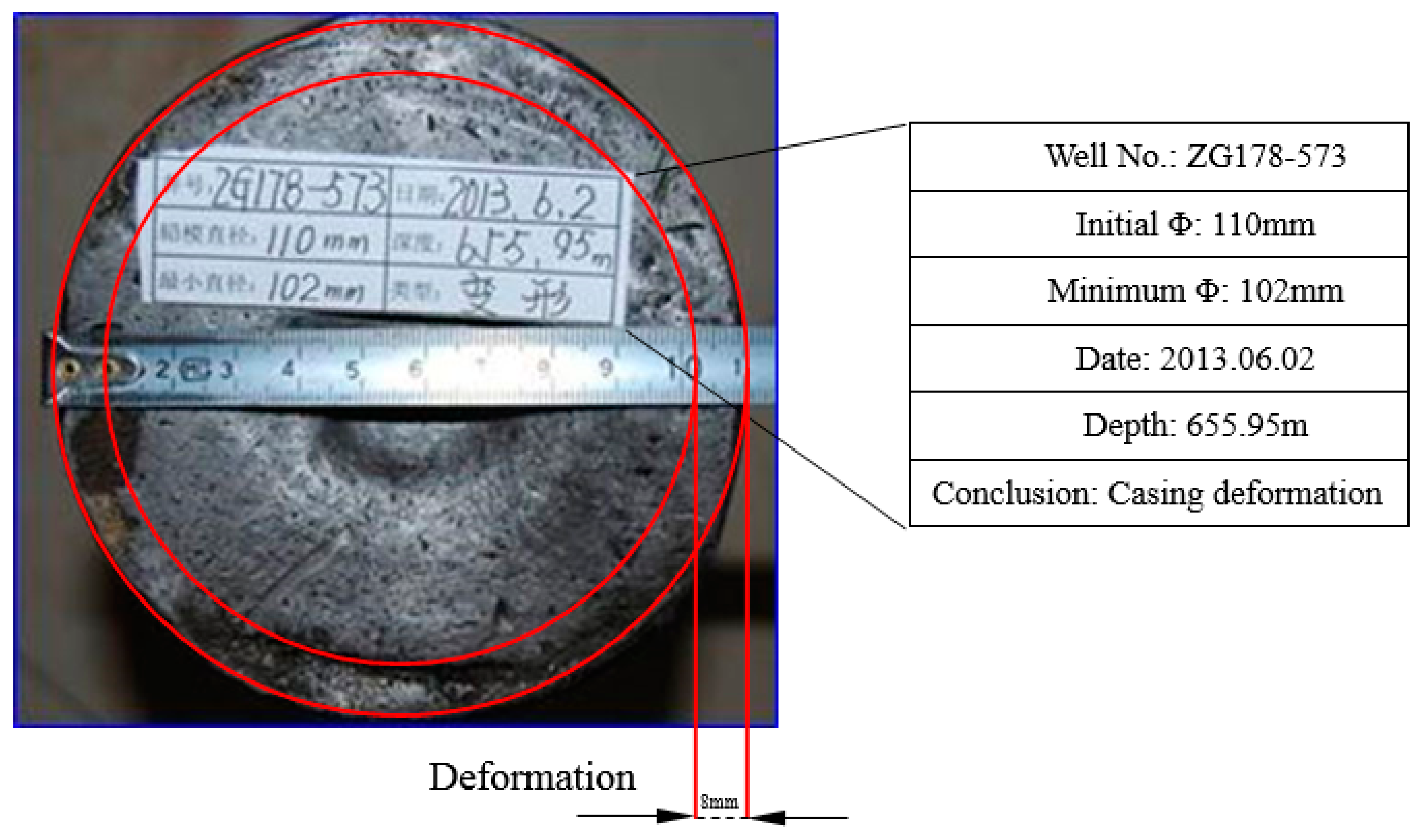
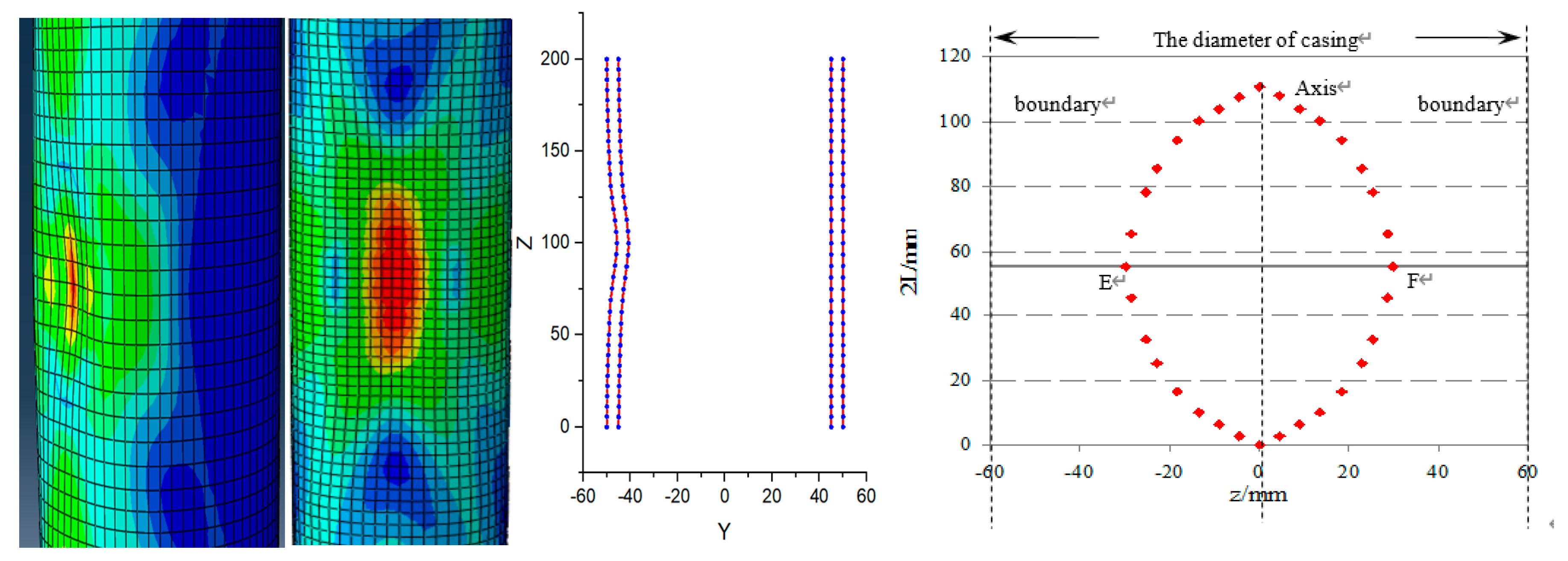
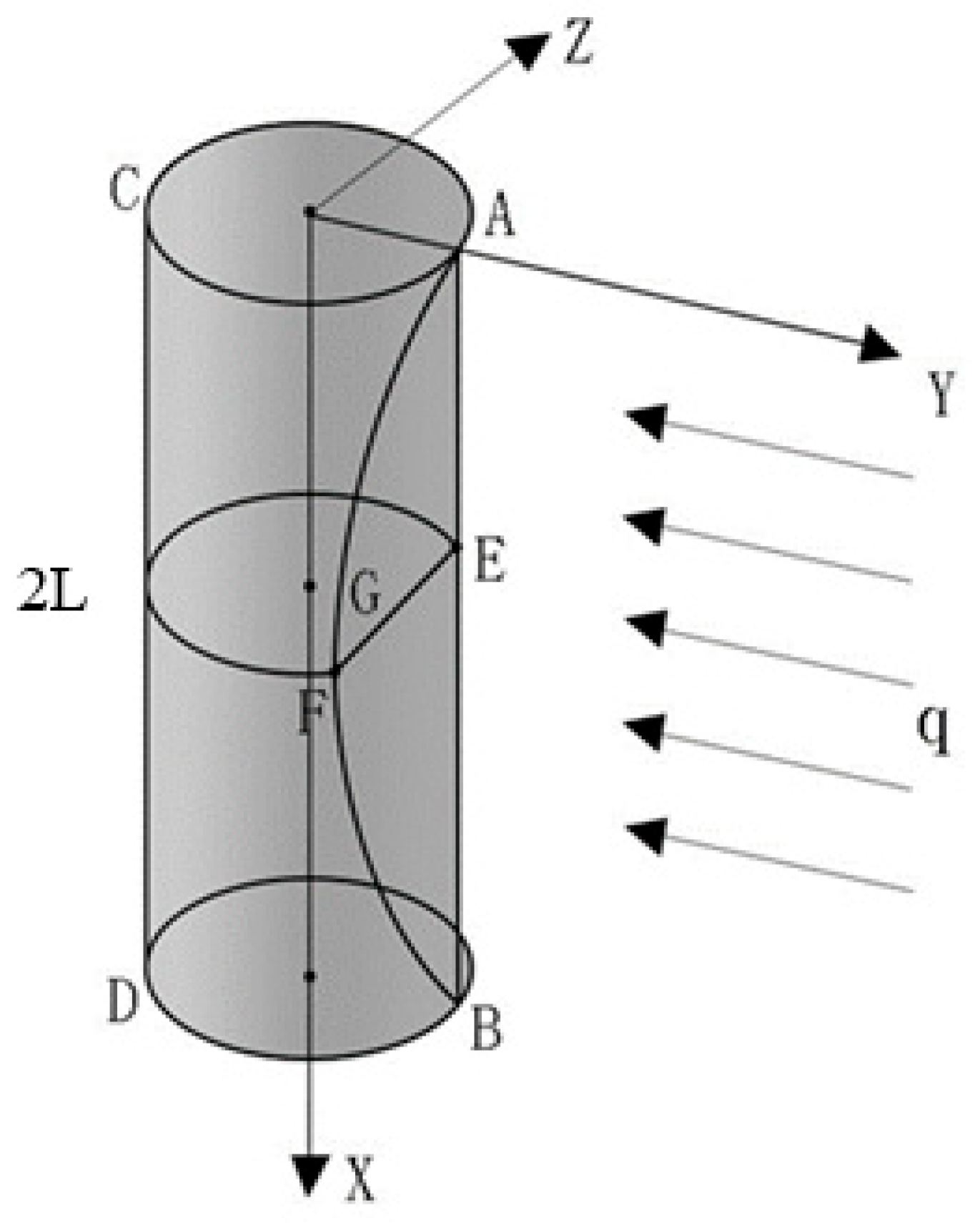
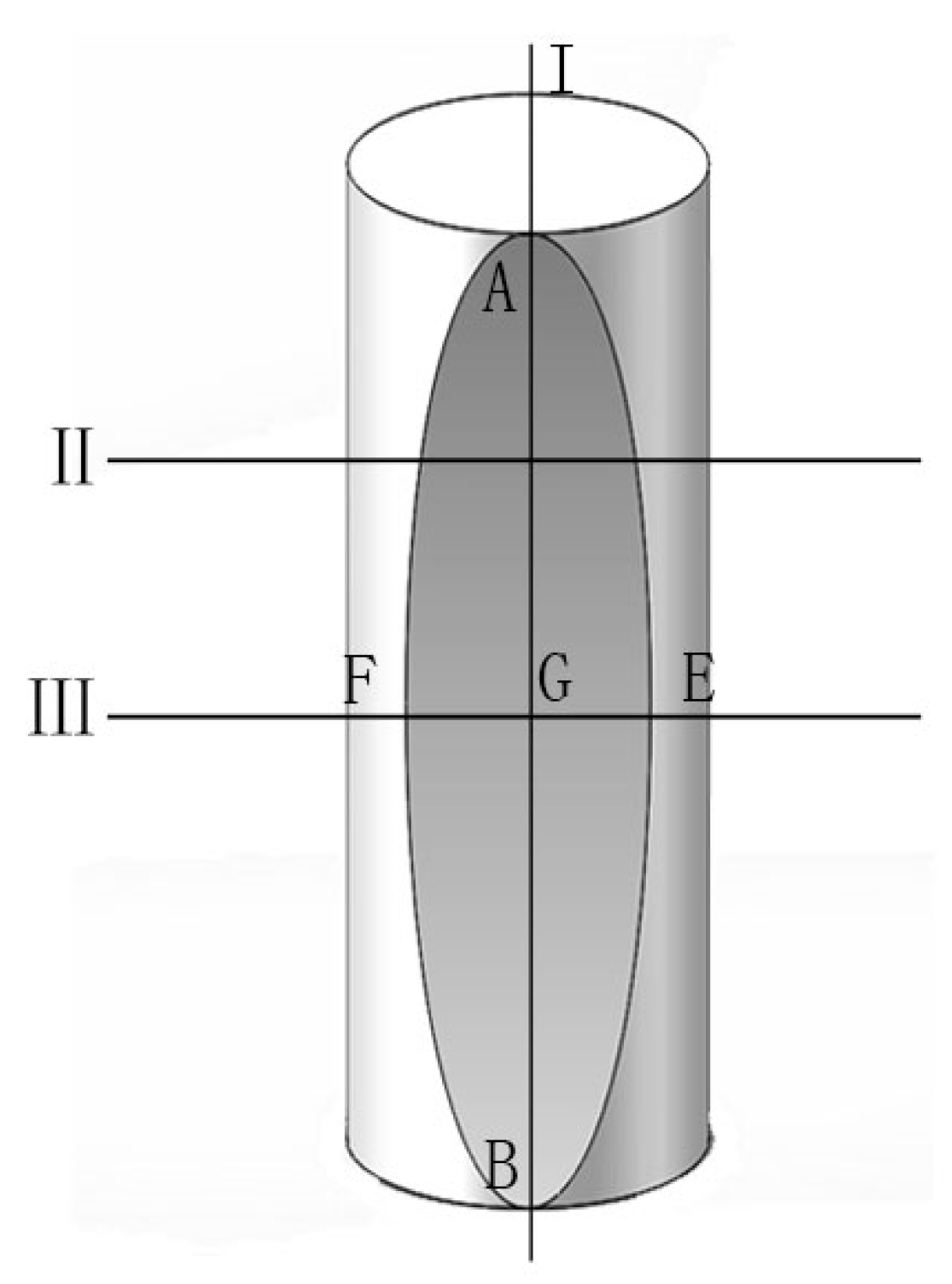

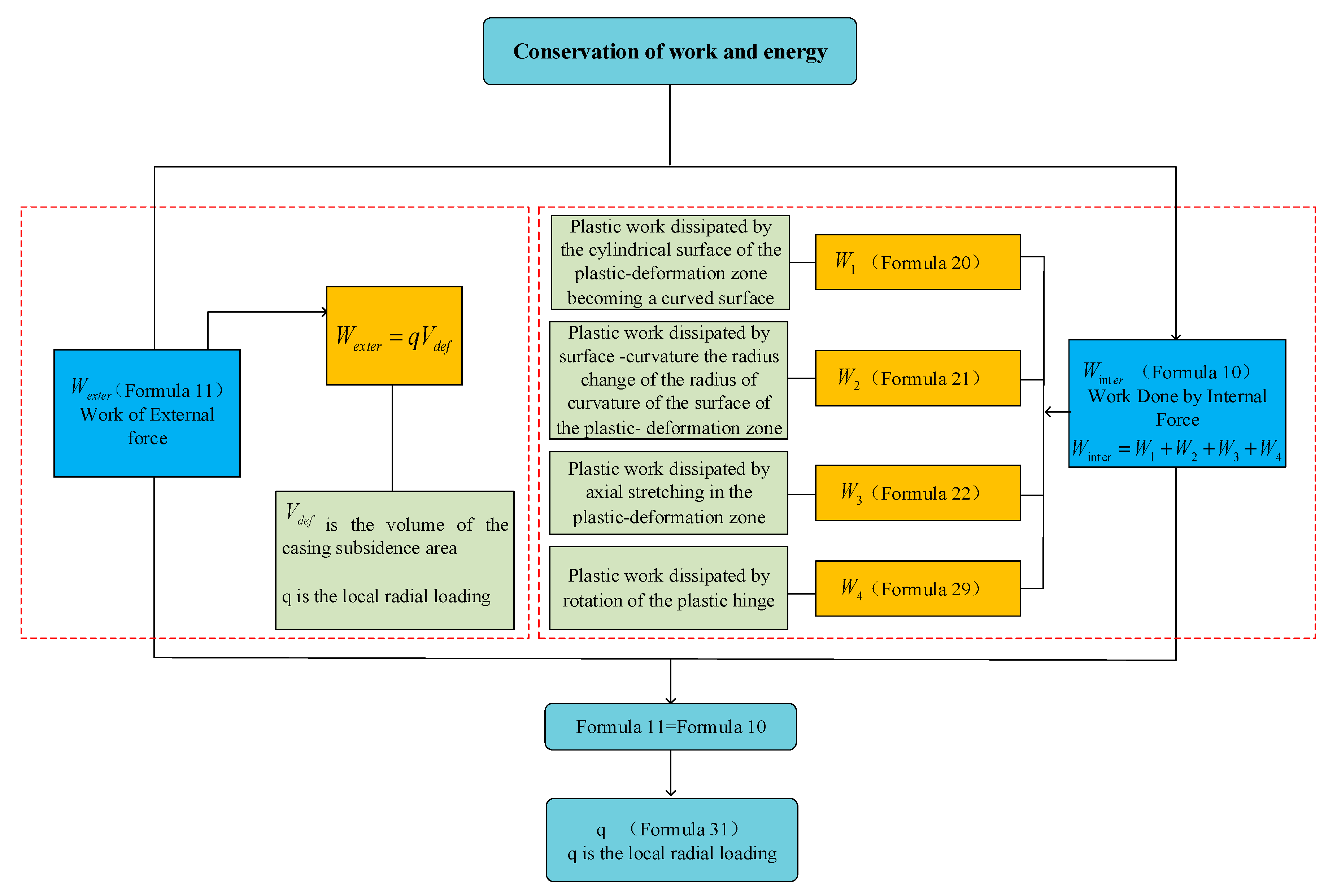
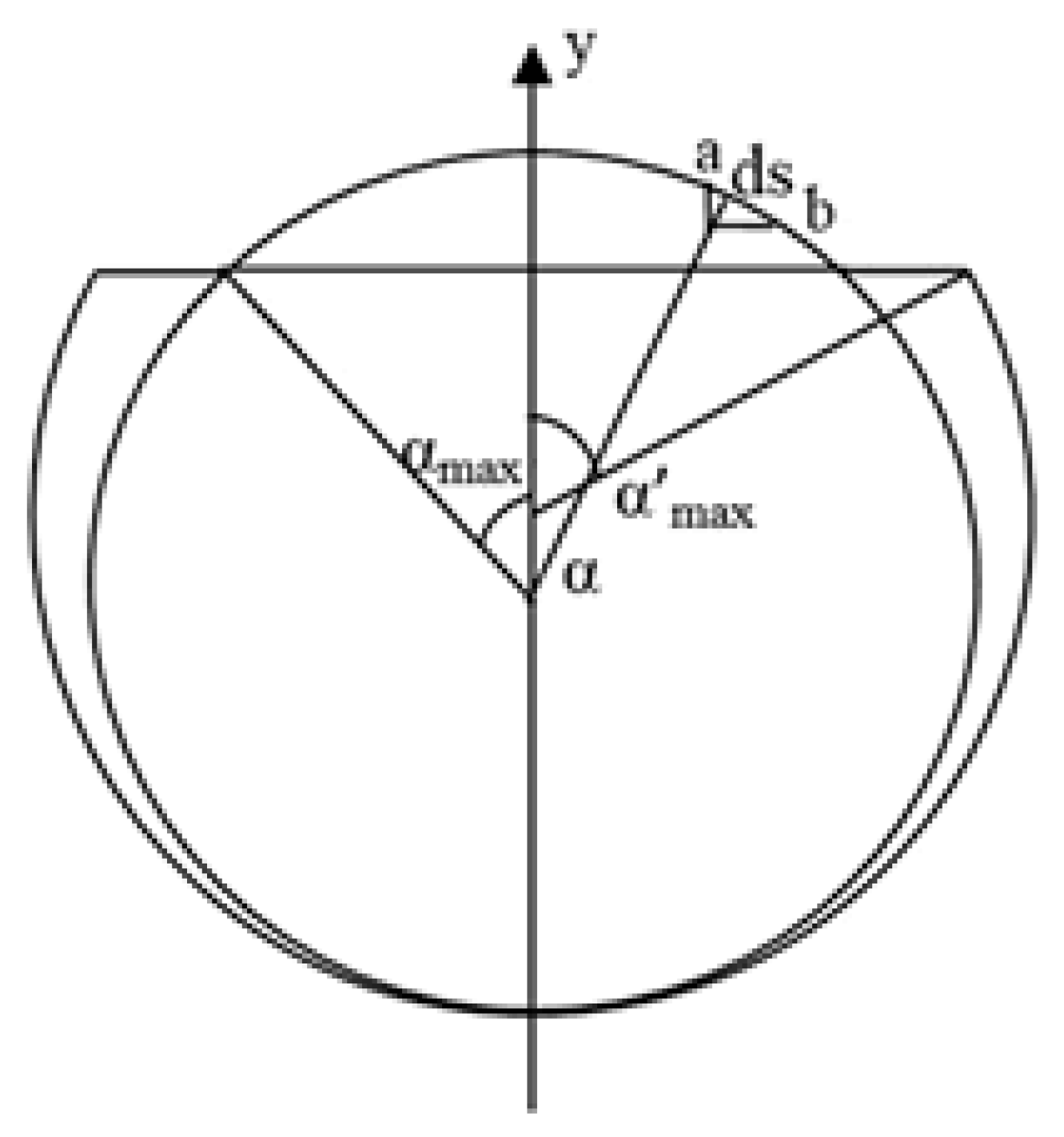
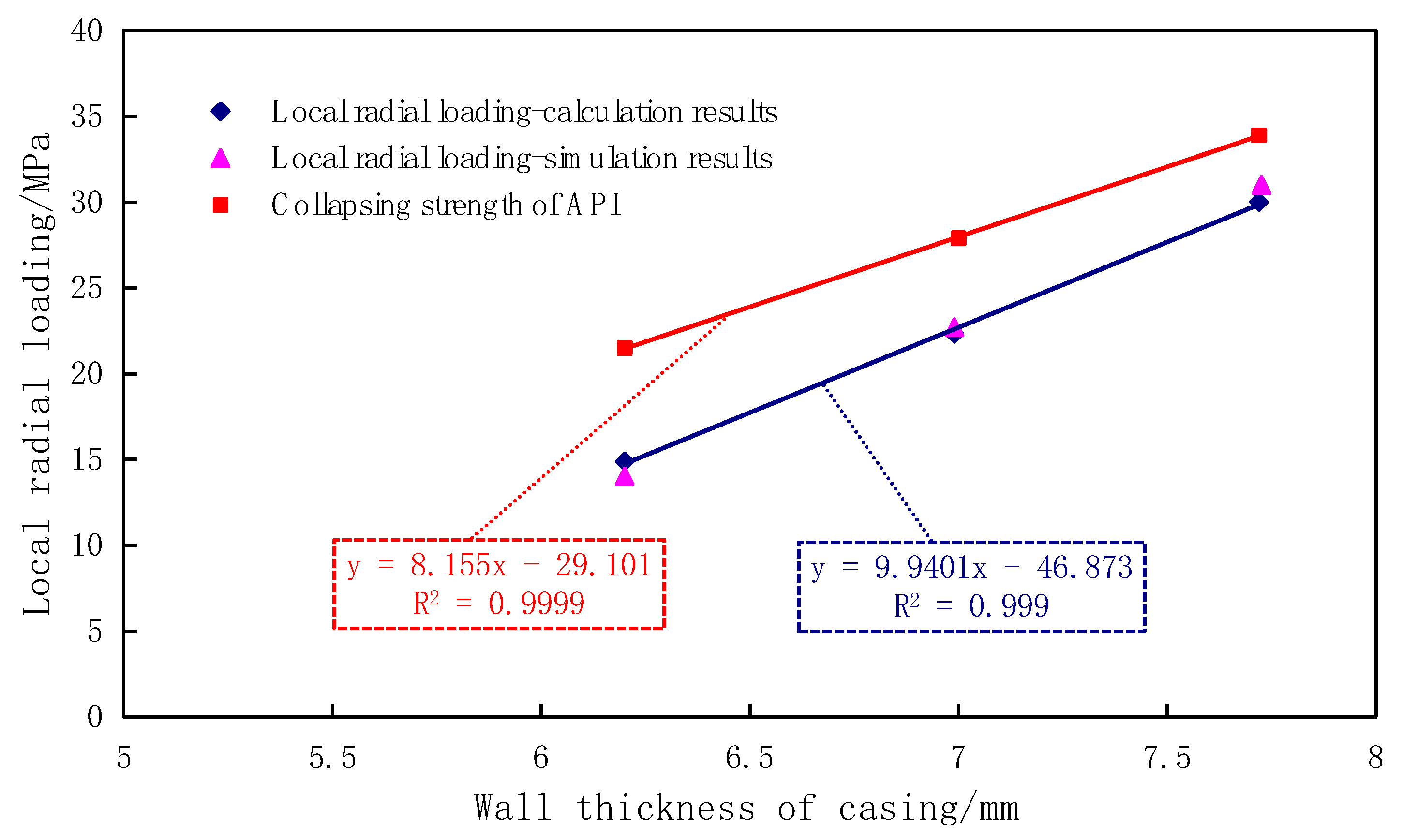
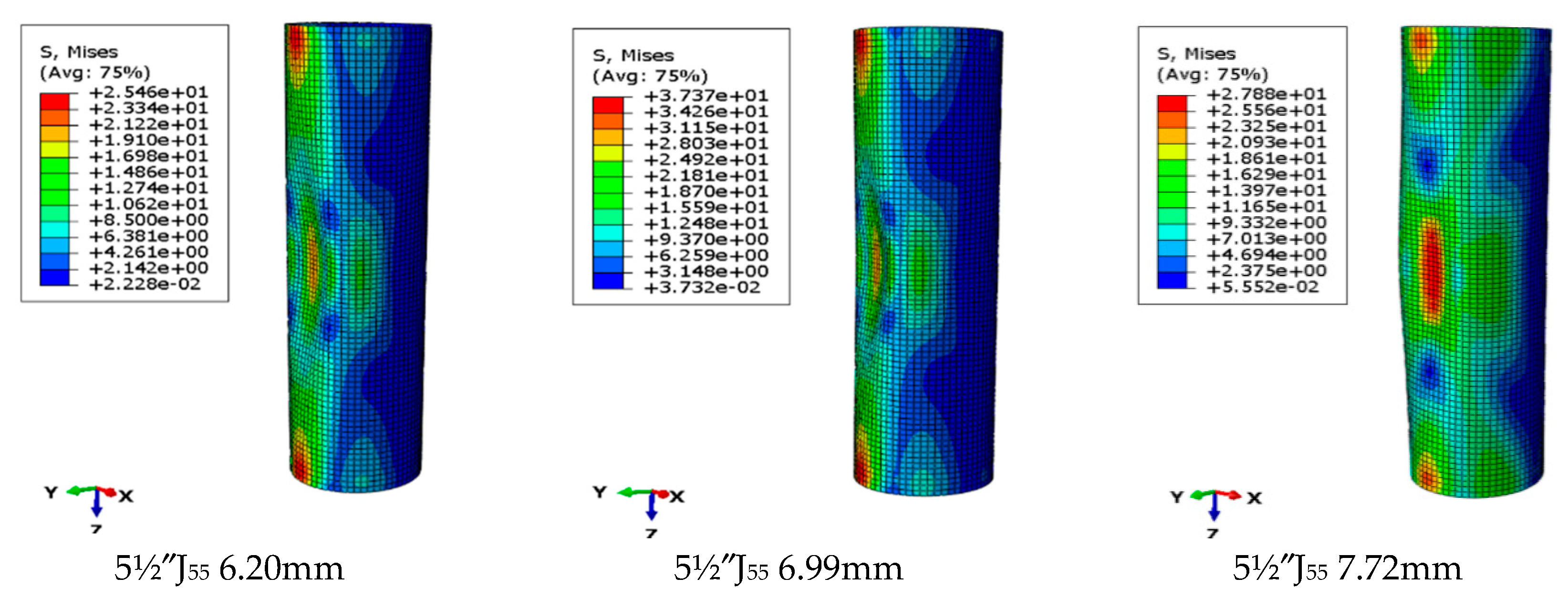

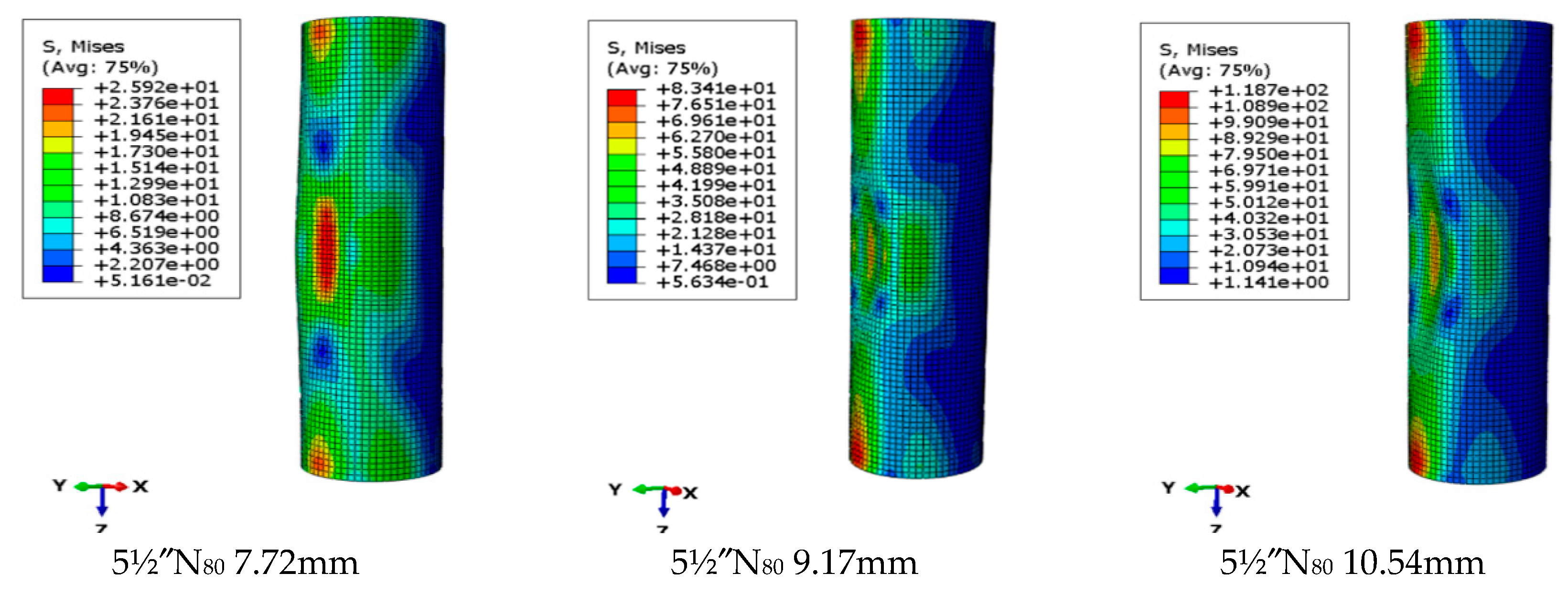
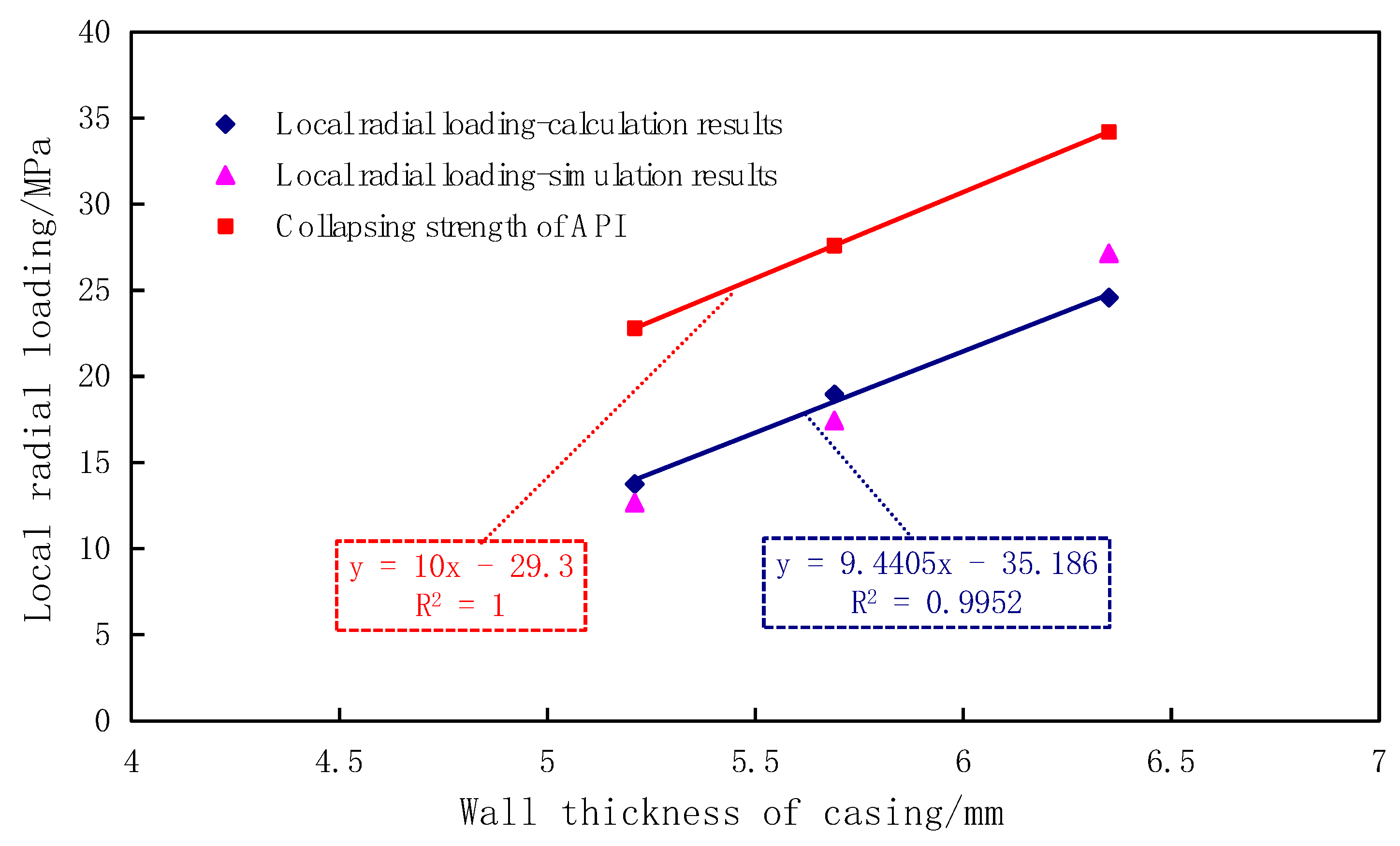
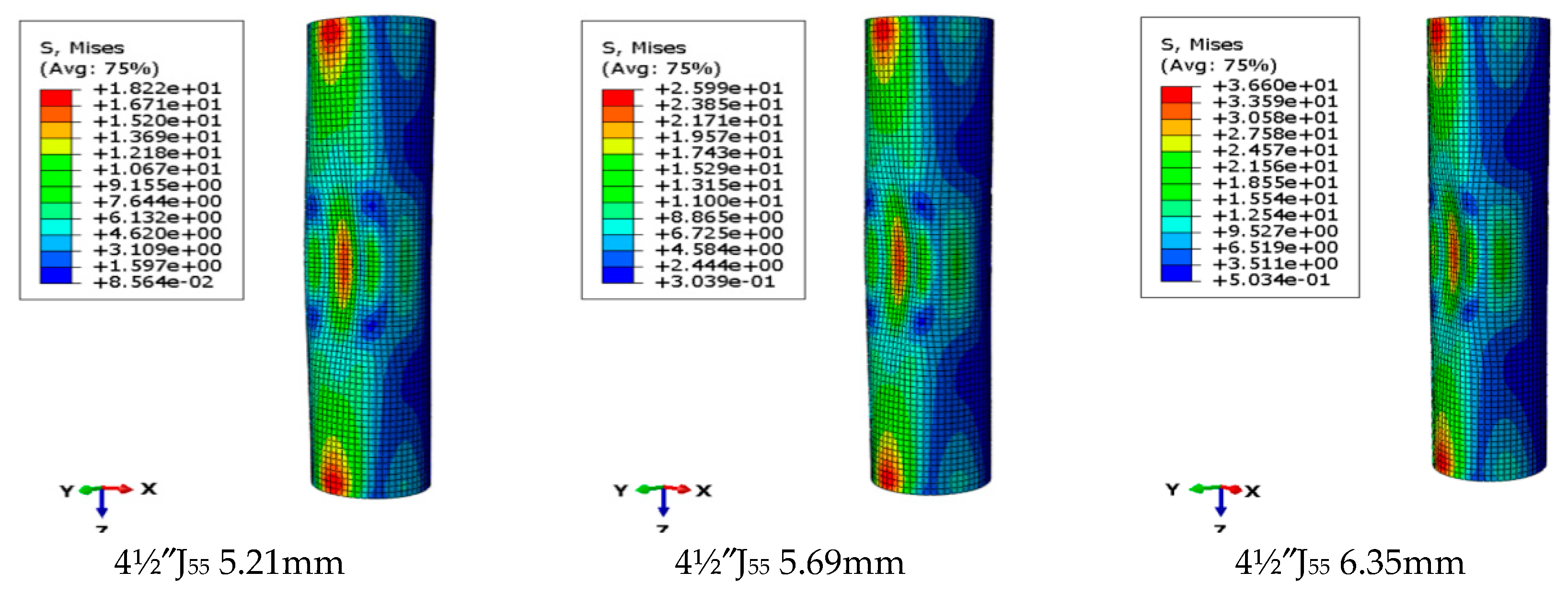
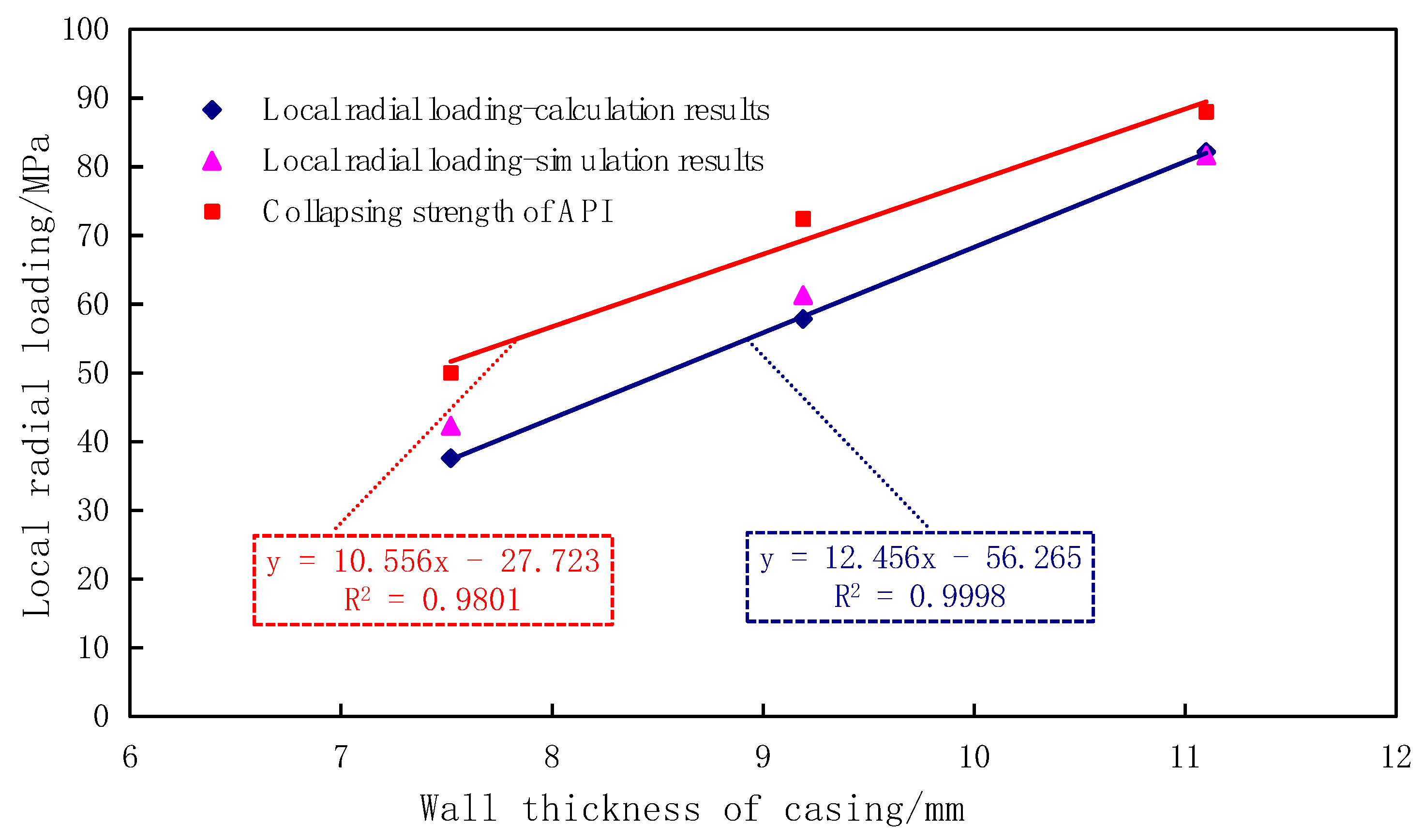
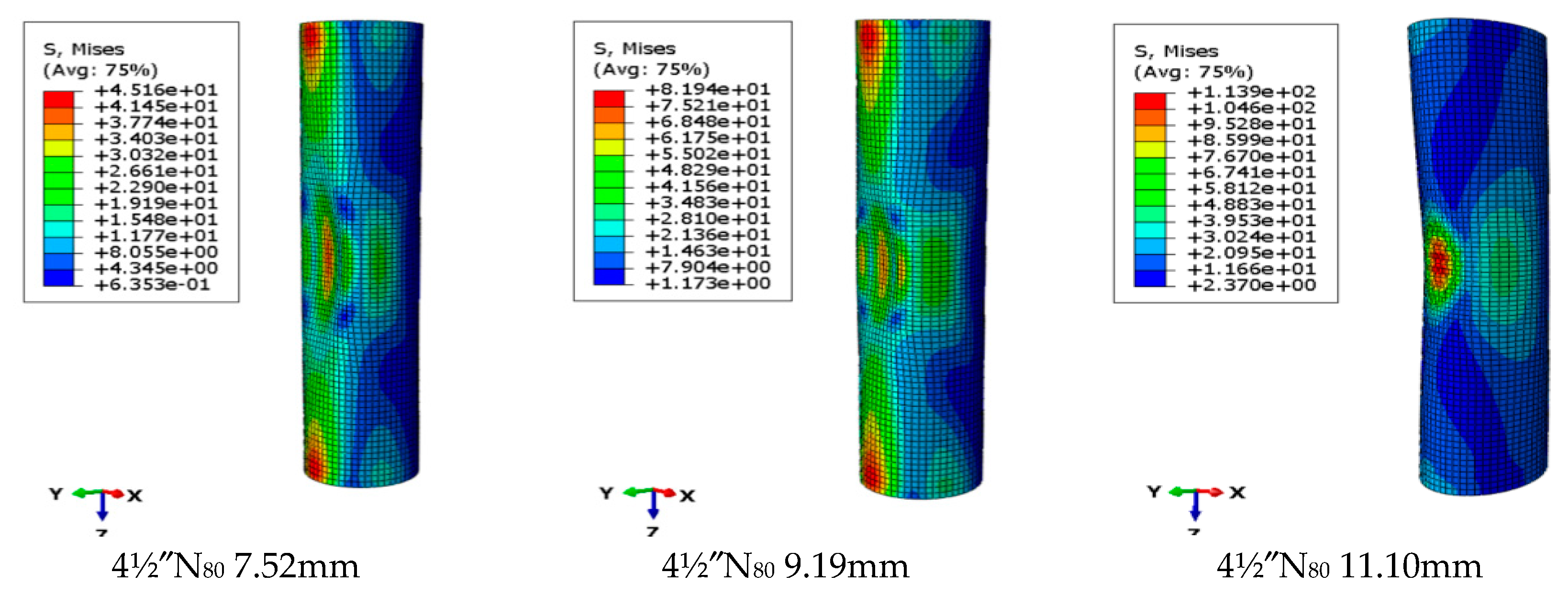
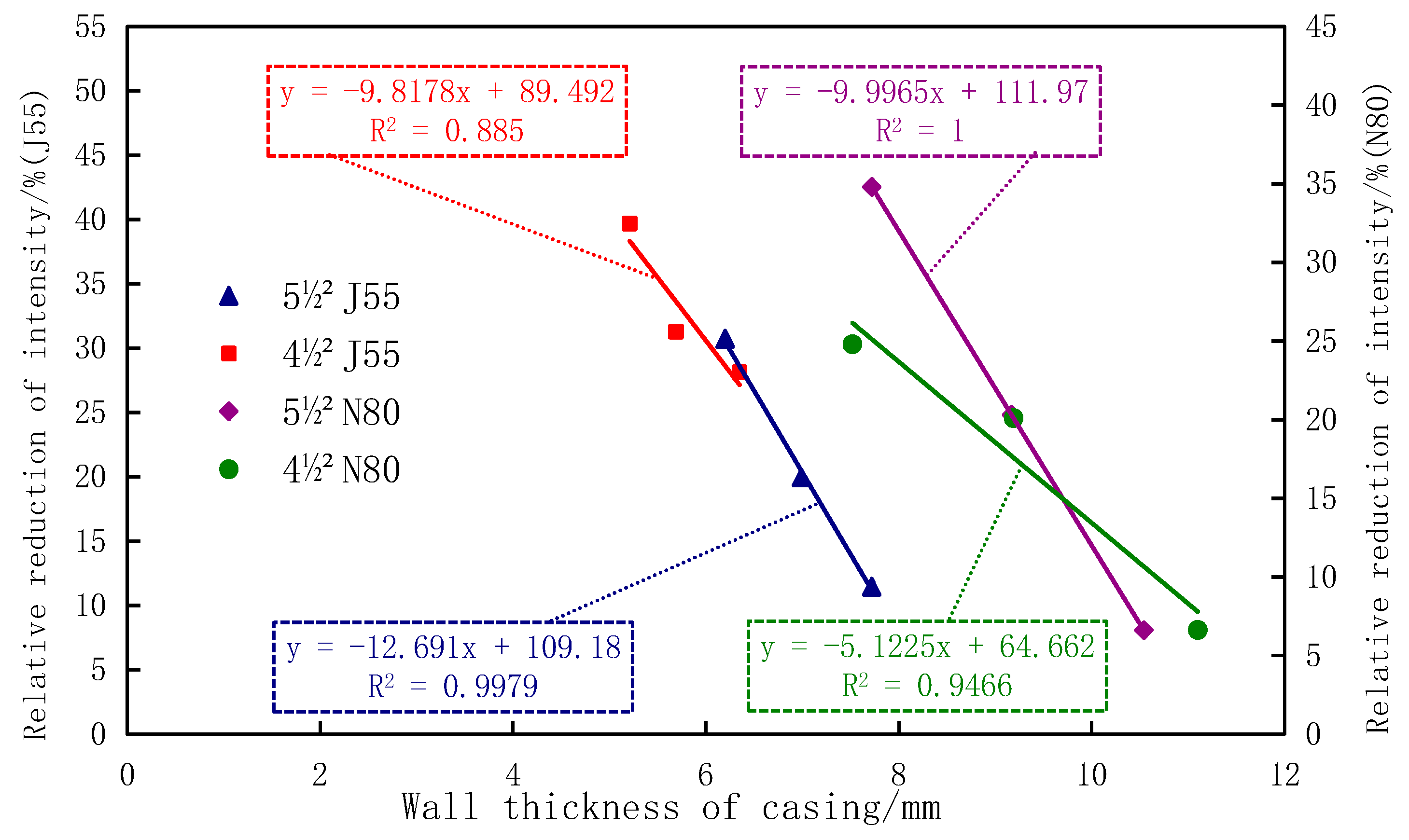
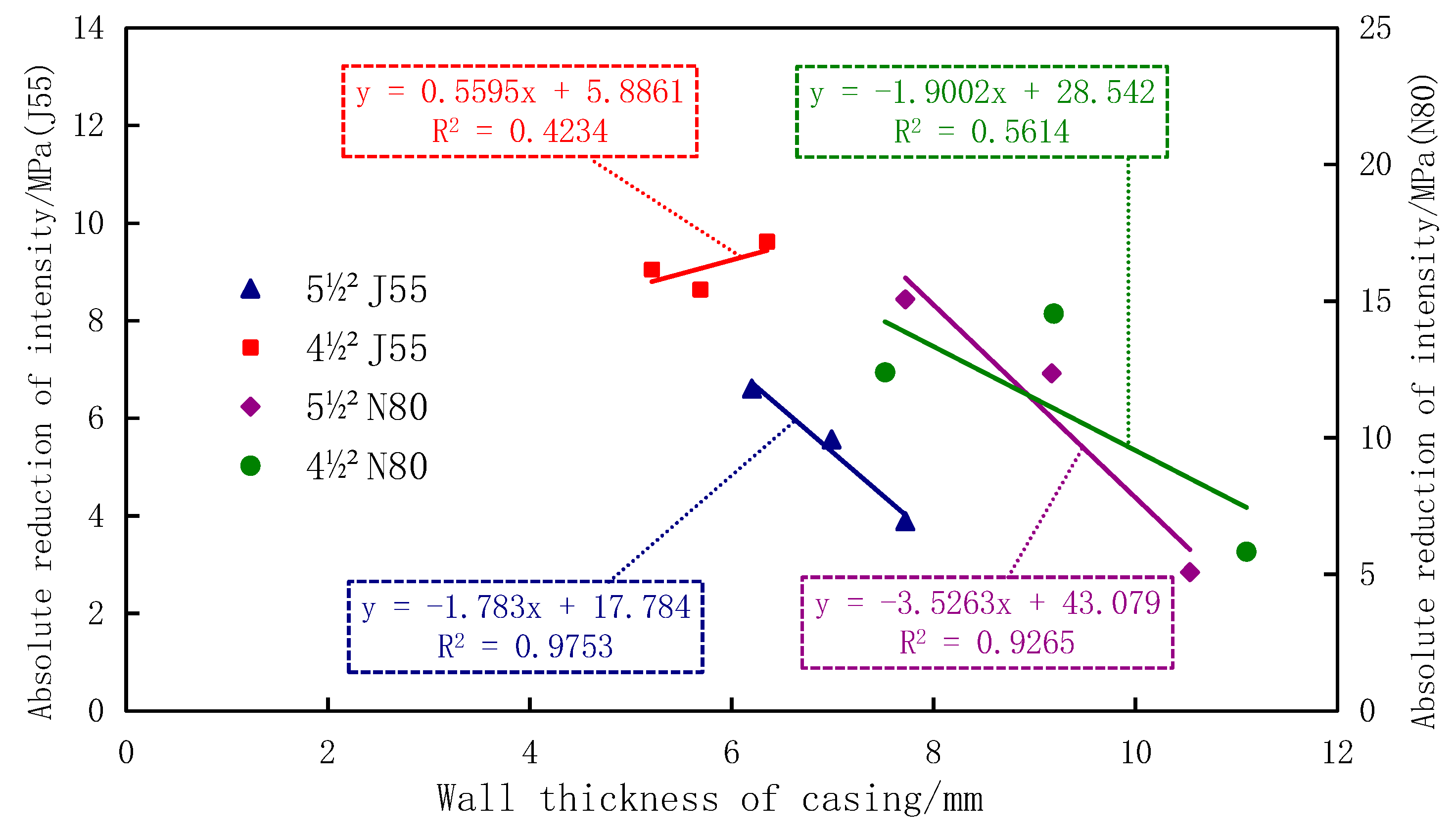
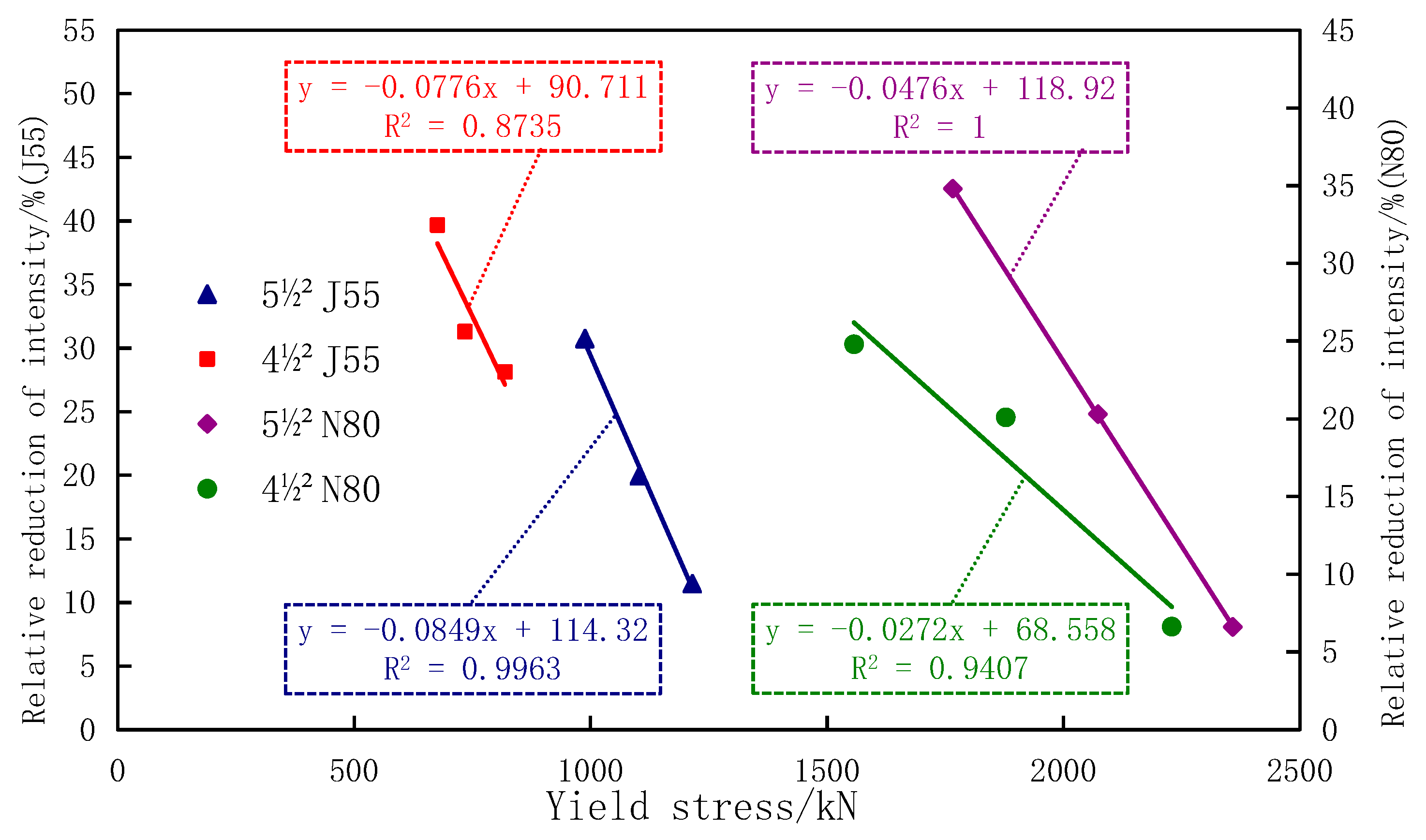

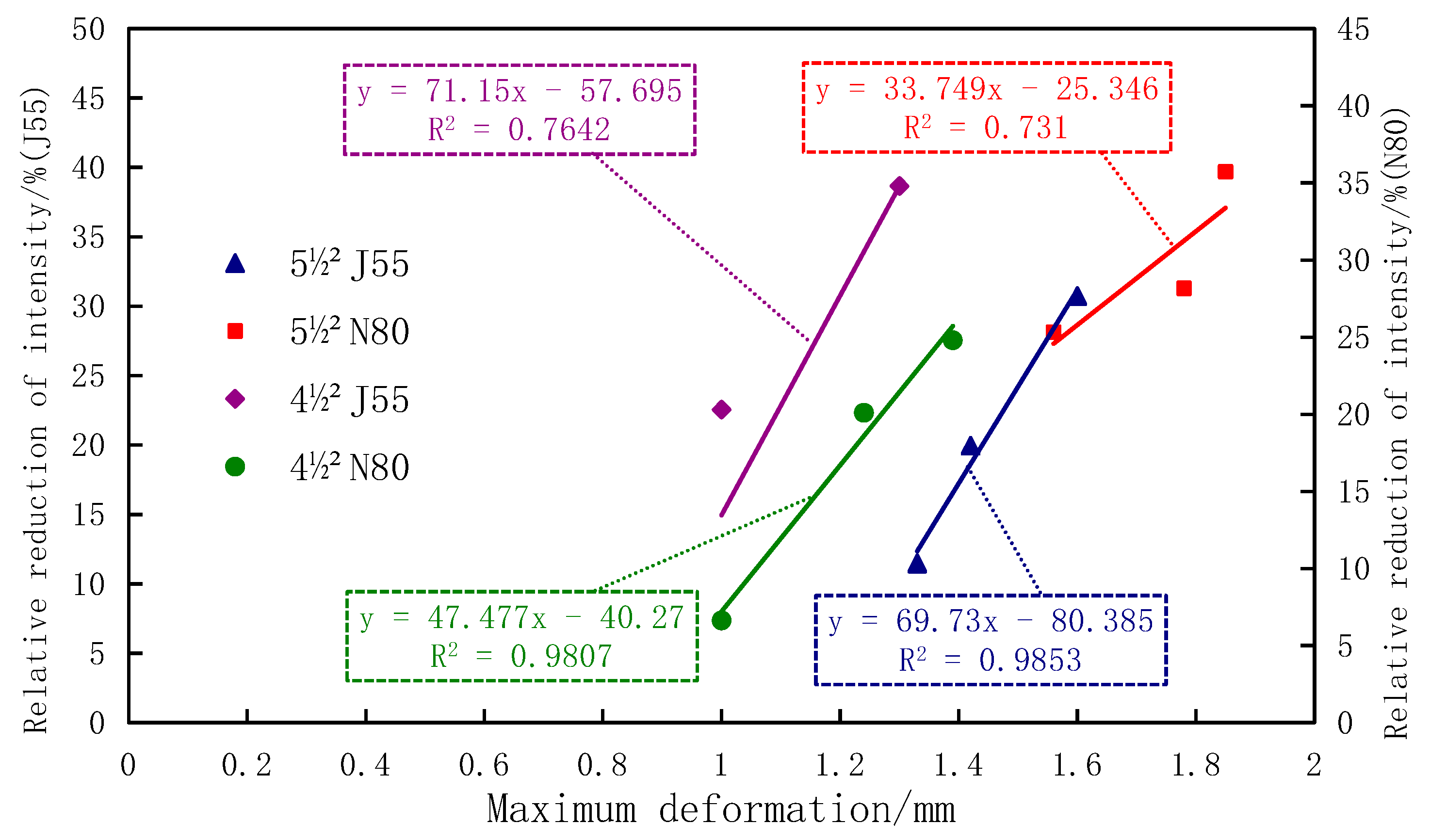

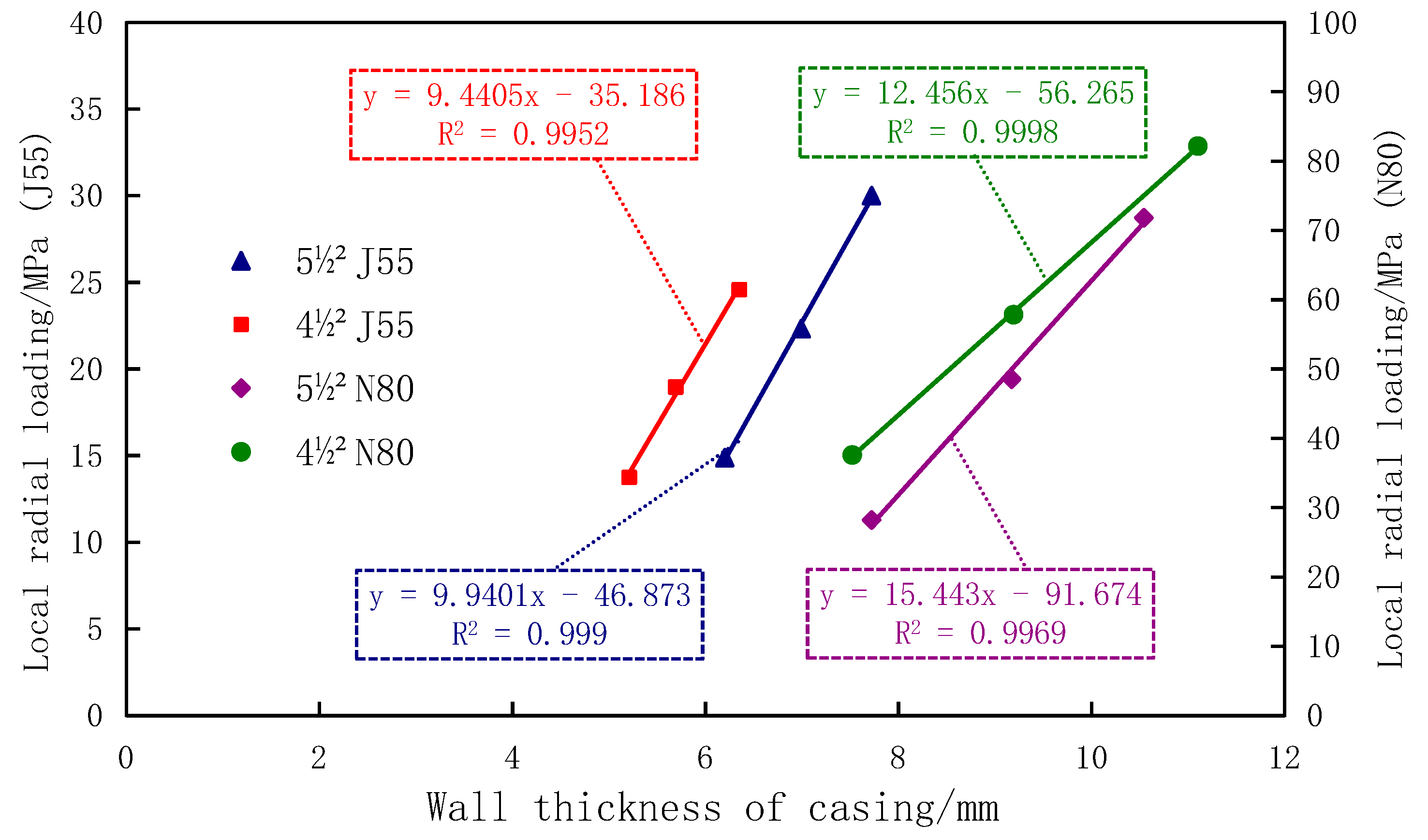

| Casing Type | /MPa | Simulation Value/MPa | Pb (API)/MPa | Pb-q/MPa | (Pb-q)/Pb/% | |||
|---|---|---|---|---|---|---|---|---|
| 5½″J55 | 6.20 | 988 | 1.60 | 14.89 | 14.0 | 21.50 | 6.61 | 30.74 |
| 6.99 | 1103 | 1.42 | 22.33 | 22.7 | 27.90 | 5.57 | 19.96 | |
| 7.72 | 1215 | 1.33 | 30.01 | 31.0 | 33.90 | 3.89 | 11.47 | |
| 5½″N80 | 7.72 | 1766 | 1.30 | 28.23 | 32.4 | 43.30 | 15.07 | 34.80 |
| 9.17 | 2073 | 1.00 | 48.54 | 47.3 | 60.90 | 12.36 | 20.30 | |
| 10.54 | 2358 | 1.00 | 71.82 | 74.4 | 76.90 | 5.08 | 6.61 | |
| 4½″J55 | 5.21 | 676 | 1.85 | 13.75 | 12.7 | 22.80 | 9.05 | 39.69 |
| 5.69 | 734 | 1.78 | 18.96 | 17.4 | 27.60 | 8.64 | 31.30 | |
| 6.35 | 819 | 1.56 | 24.58 | 27.1 | 34.20 | 9.62 | 28.13 | |
| 4½″N80 | 7.52 | 1557 | 1.39 | 37.60 | 42.3 | 50.00 | 12.40 | 24.80 |
| 9.19 | 1878 | 1.24 | 57.85 | 61.3 | 72.40 | 14.55 | 20.10 | |
| 11.10 | 2229 | 1.00 | 82.17 | 81.6 | 88.00 | 5.83 | 6.63 |
© 2020 by the authors. Licensee MDPI, Basel, Switzerland. This article is an open access article distributed under the terms and conditions of the Creative Commons Attribution (CC BY) license (http://creativecommons.org/licenses/by/4.0/).
Share and Cite
Zhao, W.; Ge, J.; Ranjith, P.G.; Wang, T.; Han, L. An Approach to Calculating Casing Bearing Capacity with Parabolic Deformation Characteristics Under Local Radial Loading. Energies 2020, 13, 1769. https://doi.org/10.3390/en13071769
Zhao W, Ge J, Ranjith PG, Wang T, Han L. An Approach to Calculating Casing Bearing Capacity with Parabolic Deformation Characteristics Under Local Radial Loading. Energies. 2020; 13(7):1769. https://doi.org/10.3390/en13071769
Chicago/Turabian StyleZhao, Wanchun, Jing Ge, Pathegama Gamage Ranjith, Tingting Wang, and Lijie Han. 2020. "An Approach to Calculating Casing Bearing Capacity with Parabolic Deformation Characteristics Under Local Radial Loading" Energies 13, no. 7: 1769. https://doi.org/10.3390/en13071769
APA StyleZhao, W., Ge, J., Ranjith, P. G., Wang, T., & Han, L. (2020). An Approach to Calculating Casing Bearing Capacity with Parabolic Deformation Characteristics Under Local Radial Loading. Energies, 13(7), 1769. https://doi.org/10.3390/en13071769






